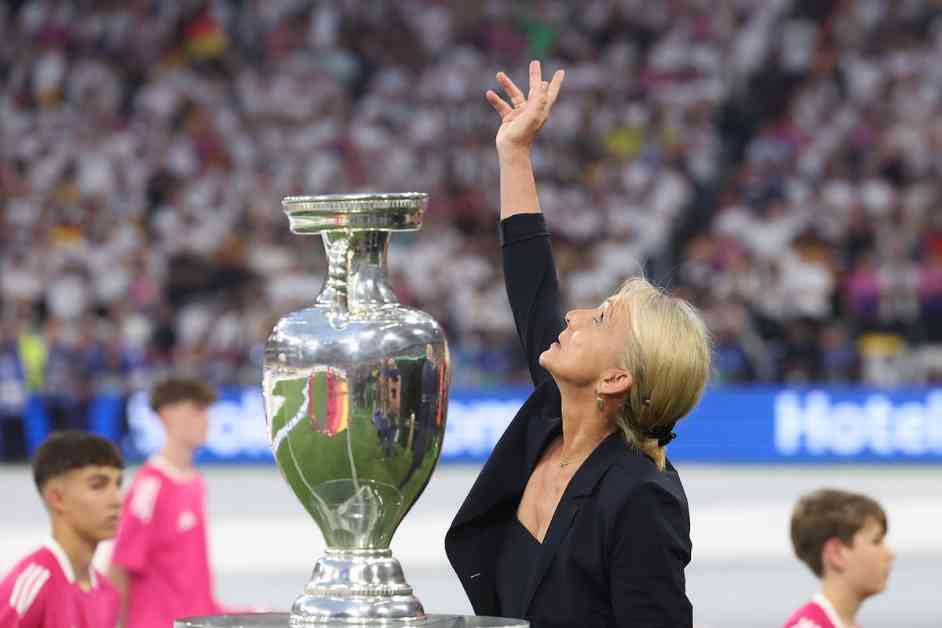When the UEFA reviewed the images of the celebrations of the Greece, champion of the 2004 Euro Cup, perhaps the most modest in history, they thought that a change was needed. The trophy held by Theodoros Zagorakis, the captain, was lost among the confetti, ribbons, and arms raised in the background. That was how the new trophy that Iker Casillas debuted in Vienna in 2008 began to take shape, replacing the one that had been awarded since the first edition in 1960. Spain has won two out of the four editions with the new cup, and they are seeking the third in this cycle against England on Sunday.
The redesign was commissioned in London in 2005 at the classic Asprey workshop, known for creating trophies for prestigious events like the Masters of Augusta, the America’s Cup, the Ryder Cup, and the Premier League. Karen Marsen, who worked on the redesign, recalls the process on a rainy morning in Hammersmith: «The commission was to try to preserve the silhouette,» she said. «We made it taller, more elegant, refined some elements, and modernized the overall design. It was a traditional shape, so it was more of an update.»
The original trophy was the idea of Henri Delaunay, the first UEFA secretary and inventor of the tournament. The first cup was made by the Chobillon goldsmiths of Paris based on a design by Arthus-Bertrand. It weighed six kilos and measured 42 centimeters, with a small marble base where the names of the champions were engraved. The new base is wider and made of silver.
The process of redesigning the trophy involved back-and-forth communication between Asprey and UEFA. The final piece weighed eight kilos and measured 60 centimeters, a significant upgrade from the original trophy.
Asprey does not create replicas of the trophy for winners, but artisans at the Iaco Group in Vicenza, near Venice, handle copies and repairs after celebrations. Since Casillas debuted the new Henri Delaunay trophy in 2008, the names of the champions are engraved on the back of the cup instead of the base. Spain’s name appears three times, Greece once, and England none.
At Asprey, they recently received the Premier League trophy from Manchester City’s celebrations, which had minor damage. In the past, there have been worse seasons for trophy repairs, as manager Reece Barber recalls a mishap during the 2019 title celebrations. Although the trophy was dropped, it was quickly lifted, and the damage was not as severe as expected.
The craftsmanship and attention to detail in the redesign and maintenance of the Euro Cup trophy highlight the significance and prestige of the tournament. The history and evolution of the trophy reflect the passion and dedication of the teams competing for European glory. The trophy not only symbolizes victory but also serves as a reminder of the rich heritage and tradition of European football.












